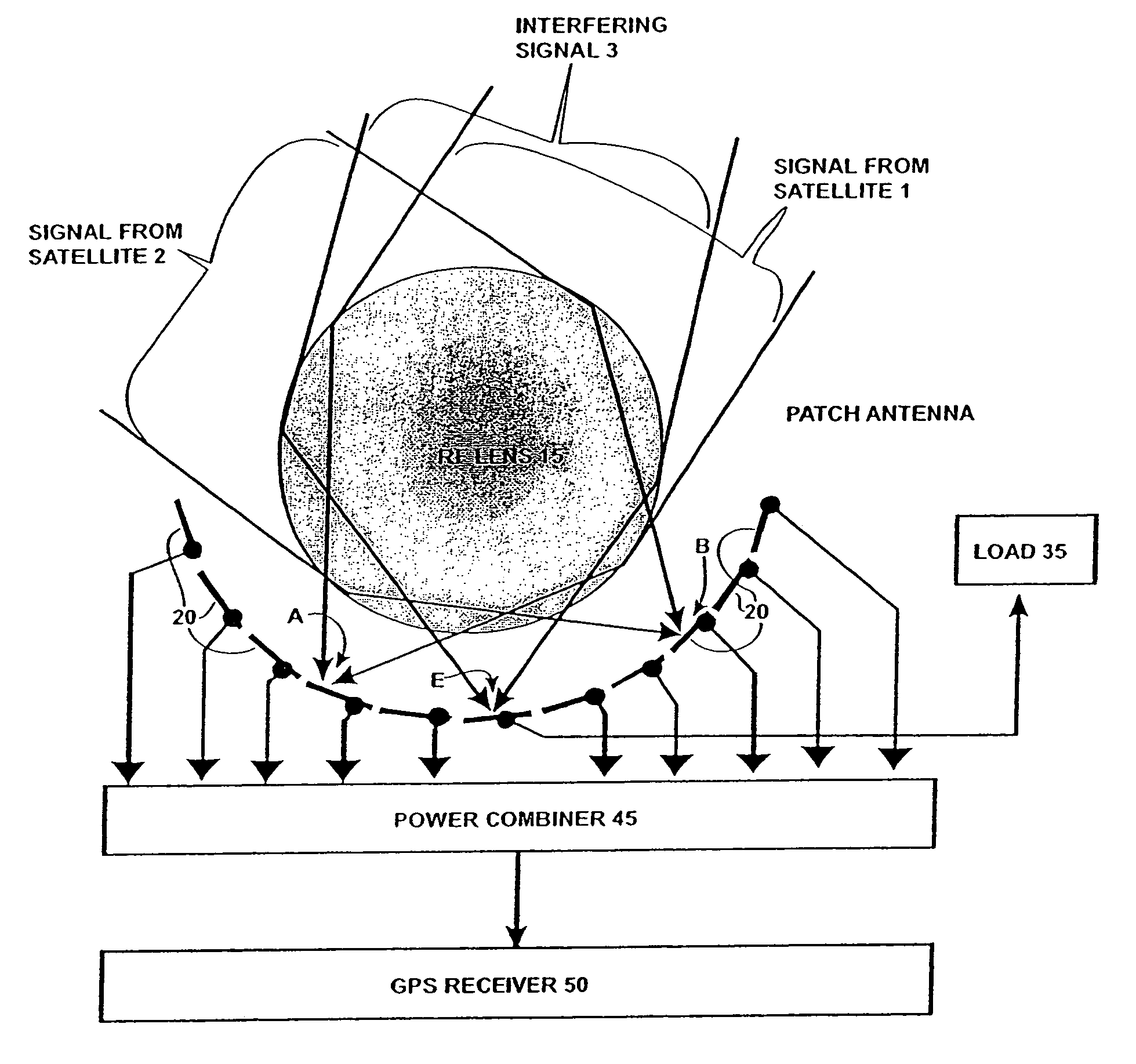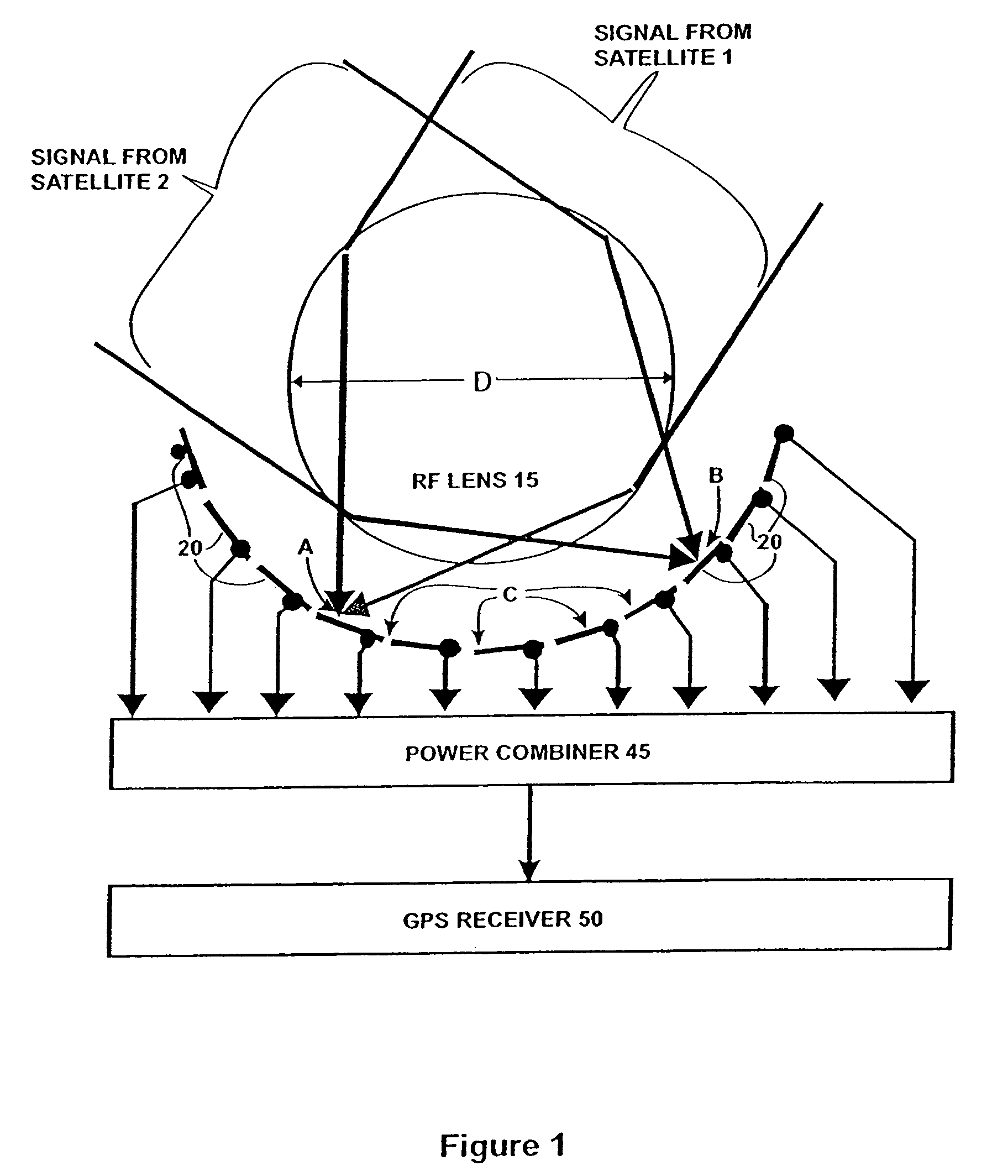Antenna system and RF signal interference abatement method
an antenna system and antenna technology, applied in the field of antenna system and rf signal interference abatement method, can solve the problems of array antenna system, high risk of interference by signals, intentional or unintentional interference,
- Summary
- Abstract
- Description
- Claims
- Application Information
AI Technical Summary
Benefits of technology
Problems solved by technology
Method used
Image
Examples
Embodiment Construction
[0030]Today, military and non-military reliance on the Global Positioning System (GPS) for normal operations (not to mention emergencies) is nearly universal. The GPS system relies on a fixed number of satellites (for example the NAVSTAR constellation is composed of 24 satellites), from which a GPS receiver must acquire the signal from at least four to determine position and time. A set of GPS codes are broadcast from each satellite, the L2 coarse / acquisition code carrier is at 1227.6 MHz and the L1 precise code carrier is at 1575.42 MHz. Each frequency band is only a few MHz, although the receiver must be capable of providing a frequency offset of approximately 10 MHz to account for the Doppler effect of the satellites' motions. Spread-spectrum techniques are use to modulate each carrier with location and timing information, thus the carrier is spread as pseudo-noise across each band. Omni-directional antennas can then be used to receive signals from all of the visible satellites, ...
PUM
 Login to View More
Login to View More Abstract
Description
Claims
Application Information
 Login to View More
Login to View More - R&D
- Intellectual Property
- Life Sciences
- Materials
- Tech Scout
- Unparalleled Data Quality
- Higher Quality Content
- 60% Fewer Hallucinations
Browse by: Latest US Patents, China's latest patents, Technical Efficacy Thesaurus, Application Domain, Technology Topic, Popular Technical Reports.
© 2025 PatSnap. All rights reserved.Legal|Privacy policy|Modern Slavery Act Transparency Statement|Sitemap|About US| Contact US: help@patsnap.com



